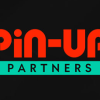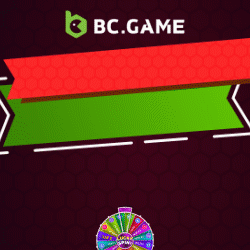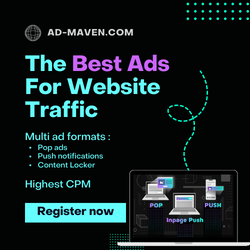- Joined
- Mar 24, 2016
- Messages
- 6,503
- Solutions
- 19
- Reaction score
- 3,661
- Points
- 206
- Awards
- 3
- Website
- www.beermoneyforum.com
- BMF Points
- $19,850,135
Nowadays, creating a website has become easy and almost everyone can do it. Indeed, thanks to site editor platforms such as Wix, Jimdo, Weebly.... it is easy to set up a site in a few minutes without having any knowledge in programming, coding and technical skills.
However, to design a website that can give to your visitors or customers want to turn back to your site is not an easy task. This requires from you, having good judgments to appreciate things at their true value and to make adjustments in order to have a site that can seduce your readers.

Just like in cooking where, to prepare a good sauce you have to follow a recipe, as well as to design your site you need to follow some principles so that your site can be attractive, useful and make your readers want to interact with your content, subscribe to your newsletter, make a purchase or at least revisit your site.
This is the objective that all companies and bloggers are looking for! Even you as a future blogger. Right?
But well before showing you how to design a website, let me introduce you to some of the criteria that a quality website must have.
5 criteria to be taken into account to have a quality site:
1. Usefulness: Yes, you read it right: usefulness. This is the most important point to take into account even before the creation of your site. What is the usefulness of your website if it is not useful to your readers? Before you do anything, make sure that your site will be useful to your target audience or future readers.
2. Seduction: this is what will allow you to conquer and retain your target audience.
3. Usability: This is the ability of your site to be functional on any device that the user will use to navigate your site (PC, Smartphone, tablet,...)
4. Navigation: This is the easiness with which the Internet user can access those he or she wants. This criterion should not be ignored otherwise your visitor will close your page and leave forever.
5. The speed of loading pages: even if nowadays there are high-debit connections everywhere, do not forget that there are people who do not have access to them and that people do not like to wait for minutes to see their page displayed. So think about how to optimize the loading of your pages.
While you know the criteria you will have to take into account to have a friendly website, let's see how to design a website now.
How to design a website?
1. Think about the target audience for your site or company
To design your blog or website you will first need to know what kind of readers or audience your blog should receive. All the work begins there. Because, whether it is the choice of theme, colors, and type of content you will implement,... they must meet the needs of your readers. For example, if your target audience is women, then you will choose a theme that will emphasize color and images enhancement and choose a color that most women love (pink for example).
2. Choose a theme
When building your website you probably installed a theme, check if it meets the requirements of your business. I mean, is the theme allows you to highlight the elements that your visitors might need. Website editors have a variety of free and paid theme at your disposal that you can find according to your business sector while filtering models by category.
In addition to this analysis, make sure that your theme is suitable to display on mobile phones such as smartphones, tablets,... and make sure that your theme is a fast loading theme. Otherwise, you will drive away your visitors without knowing it.
To guide you a little bit, you can use the Google mobile compatibility test to check if your theme is responsive (mobile friendly). To do this, visit the demo of the theme to see the design, then copy the link and paste it into the Google mobile compatibility test bar and validate. Google will tell you if the theme is responsive or not.
Now, for the issue of fast loading of the theme, you can always copy your theme demo's link and paste it on Google PageSpeed Insights and validate. Google will analyze it and give you two scores out of 100: one of them represents the optimization quality of your theme on smartphones and the other the theme optimization quality on PCs.
3. Design your "Home page"
This is the most important and the most visited page of your website.
And these visitors generally, will seek to perform an action (make an order) or find informations they have come to look for. It is therefore essential to make your homepage beautiful but above all, to simplify their lives by allowing them to understand very quickly what you can offer them. The ideal would be not to overload the page with useless or unnecessary information, but to be clearer, simpler and more accurate in the description. Because if your homepage is poorly organized, it will leave a bad impression on you or your company and will probably make you lose some of your visitors or customers.
For example, you can simply limit yourself to these elements on your Home page (in the case of a simple blog):
3. Build your "about us" and contact page
Your about page, after the Home page, is a very important element not to neglect in the design of your website because it allows you to communicate even more with your visitors. This is the page that curious visitors are looking to visit to learn more about you, and your company once they have landed on your site or after having read a few pages. Then you will need to think carefully about how to build it in order to better convince your visitors to find interest and stay in touch with your company. Do not be too long or too talkative in the presentation but be concise and precise. So
Focus on the points such as:
Also, don't forget to make it visible by adding it to your navigation menu so that your visitors can easily find it.
4. Build your contact page and FAQ (for companies)
Just like your about page, your contact page is also important. Indeed, it is through your contact page that your readers can contact you for questions of understanding or for other needs related to your service. Therefore, this page should contain information such as your phone number, your e-mail address,...
Note that you can add your social media links to your contact page. This allows the customer to contact you directly on these social networks.
As for your FAQ page (only for companies), it must give the answers that your customers could have on your services or products. This involves anticipating your questions and then providing answers to them in order to free up time for your support team.
5. Create content to post
After all this work, what remains to be done is to create content for your blog. The content must be optimized for SEO, but it must also attract the attention of your reader. To do this, think about the choice of your keywords, outgoing links,... (I assume this is your first article, so no need to suggest incoming links). In addition, offer them quality content that brings them value.
Also think about the font style, color, font size you will use. They are very important. A well arranged and well-aerated text is easier to read than a text that is cluttered. Imagine a very small font size text when your target audience is elderly people. What will be their reaction? I let you imagine!
However, to design a website that can give to your visitors or customers want to turn back to your site is not an easy task. This requires from you, having good judgments to appreciate things at their true value and to make adjustments in order to have a site that can seduce your readers.
Just like in cooking where, to prepare a good sauce you have to follow a recipe, as well as to design your site you need to follow some principles so that your site can be attractive, useful and make your readers want to interact with your content, subscribe to your newsletter, make a purchase or at least revisit your site.
This is the objective that all companies and bloggers are looking for! Even you as a future blogger. Right?
But well before showing you how to design a website, let me introduce you to some of the criteria that a quality website must have.
5 criteria to be taken into account to have a quality site:
1. Usefulness: Yes, you read it right: usefulness. This is the most important point to take into account even before the creation of your site. What is the usefulness of your website if it is not useful to your readers? Before you do anything, make sure that your site will be useful to your target audience or future readers.
2. Seduction: this is what will allow you to conquer and retain your target audience.
3. Usability: This is the ability of your site to be functional on any device that the user will use to navigate your site (PC, Smartphone, tablet,...)
4. Navigation: This is the easiness with which the Internet user can access those he or she wants. This criterion should not be ignored otherwise your visitor will close your page and leave forever.
5. The speed of loading pages: even if nowadays there are high-debit connections everywhere, do not forget that there are people who do not have access to them and that people do not like to wait for minutes to see their page displayed. So think about how to optimize the loading of your pages.
While you know the criteria you will have to take into account to have a friendly website, let's see how to design a website now.
How to design a website?
1. Think about the target audience for your site or company
To design your blog or website you will first need to know what kind of readers or audience your blog should receive. All the work begins there. Because, whether it is the choice of theme, colors, and type of content you will implement,... they must meet the needs of your readers. For example, if your target audience is women, then you will choose a theme that will emphasize color and images enhancement and choose a color that most women love (pink for example).
2. Choose a theme
When building your website you probably installed a theme, check if it meets the requirements of your business. I mean, is the theme allows you to highlight the elements that your visitors might need. Website editors have a variety of free and paid theme at your disposal that you can find according to your business sector while filtering models by category.
In addition to this analysis, make sure that your theme is suitable to display on mobile phones such as smartphones, tablets,... and make sure that your theme is a fast loading theme. Otherwise, you will drive away your visitors without knowing it.
To guide you a little bit, you can use the Google mobile compatibility test to check if your theme is responsive (mobile friendly). To do this, visit the demo of the theme to see the design, then copy the link and paste it into the Google mobile compatibility test bar and validate. Google will tell you if the theme is responsive or not.
Now, for the issue of fast loading of the theme, you can always copy your theme demo's link and paste it on Google PageSpeed Insights and validate. Google will analyze it and give you two scores out of 100: one of them represents the optimization quality of your theme on smartphones and the other the theme optimization quality on PCs.
3. Design your "Home page"
This is the most important and the most visited page of your website.
And these visitors generally, will seek to perform an action (make an order) or find informations they have come to look for. It is therefore essential to make your homepage beautiful but above all, to simplify their lives by allowing them to understand very quickly what you can offer them. The ideal would be not to overload the page with useless or unnecessary information, but to be clearer, simpler and more accurate in the description. Because if your homepage is poorly organized, it will leave a bad impression on you or your company and will probably make you lose some of your visitors or customers.
For example, you can simply limit yourself to these elements on your Home page (in the case of a simple blog):
- your logo + the company name with your slogan
- a short description of the theme you are addressing on your blog
- a simple and easily visible navigation menu (place it on the left, at the top of the page)
- one or two illustrative images for the visual impact of your visitors.
3. Build your "about us" and contact page
Your about page, after the Home page, is a very important element not to neglect in the design of your website because it allows you to communicate even more with your visitors. This is the page that curious visitors are looking to visit to learn more about you, and your company once they have landed on your site or after having read a few pages. Then you will need to think carefully about how to build it in order to better convince your visitors to find interest and stay in touch with your company. Do not be too long or too talkative in the presentation but be concise and precise. So
Focus on the points such as:
- The reason for creating your blog or company
- Describe the type of service you provide
- Define your objectives
- Define your audience
- Introduce yourself (or the company's staff and their role)
Also, don't forget to make it visible by adding it to your navigation menu so that your visitors can easily find it.
4. Build your contact page and FAQ (for companies)
Just like your about page, your contact page is also important. Indeed, it is through your contact page that your readers can contact you for questions of understanding or for other needs related to your service. Therefore, this page should contain information such as your phone number, your e-mail address,...
Note that you can add your social media links to your contact page. This allows the customer to contact you directly on these social networks.
As for your FAQ page (only for companies), it must give the answers that your customers could have on your services or products. This involves anticipating your questions and then providing answers to them in order to free up time for your support team.
5. Create content to post
After all this work, what remains to be done is to create content for your blog. The content must be optimized for SEO, but it must also attract the attention of your reader. To do this, think about the choice of your keywords, outgoing links,... (I assume this is your first article, so no need to suggest incoming links). In addition, offer them quality content that brings them value.
Also think about the font style, color, font size you will use. They are very important. A well arranged and well-aerated text is easier to read than a text that is cluttered. Imagine a very small font size text when your target audience is elderly people. What will be their reaction? I let you imagine!

























































